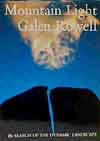Hi, my name is Fazal and I have a camera problem.
I guess I should have heeded the first signs almost a decade ago when I bought a ridiculously expensive but oh-so-cool Nikon 35Ti. The incubation period was long, and I thought having shifted to digital in 1998 would protect me, but this year alone I bought a Nikon FM3A and a Leica M6 TTL (unlike the pictures, my FM3A is chrome and my M6 black).
What is it about these technologically obsolete cameras that makes them so compelling? Clearly, retro nostalgia, harking back to my first camera, a Zeiss Ikon Contaflex Super, plays a role, but there is more to it. And I certainly intend to use them, unlike some Japanese who collect them with almost fetichist care (as narrated on this page).
Much of the appeal these cameras have lies in their timelessness and near-perfect design, like those of other classics like the Rolleiflex TLR or the Porsche 911. More importantly, the more relaxed (some would say inconvenient) shooting style, due to manual exposure and focus, forces one to pay more attention to the picture taking process.
Arguably, this leads to better images than the blunderbuss approach (specially with digital cameras where there are no film costs to moderate shooting frenzy). But this also means more conscious cognitive time is passed in the process of taking pictures as opposed to the mere end-result.
Thus the real reason these cameras endure lies in the mutually reinforcing combination of conscious time spent handling (fondling?) the camera and the tactile or visual pleasure experienced in using them. These cameras are about photography, not photographs.
 Galen Rowell was a world-class mountaineer and photographer. He
Galen Rowell was a world-class mountaineer and photographer. He